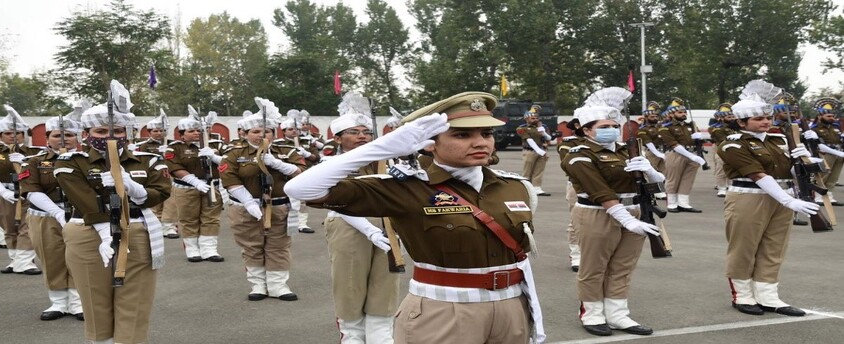Representation in India’s police forces
10, Apr 2023

Prelims level : Governance
Mains level : GS-II Governance - Issues Afflicting Indian Civil Services
Why in News?
- The India Justice Report 2022, released by Tata Trusts ranks police forces of States based on various indicators such as the number of vacancies against the sanctioned strength of personnel, and representation of women and SC/ST communities.
- The report is based on overall data of 4 pillars of justice delivery namely Police, Judiciary, Prisons, and Legal Aid.
- The report’s findings are crucial for governments, civil society and the business community as it provides them with objective data which allows for participatory dialogues between governments and active citizens of disparate ideologies for reforms through consensus building.
Highlights of the report:
- It ranks police forces of States based on various indicators such as vacancies as against the sanctioned strength of personnel, representation of women and Scheduled Caste/Scheduled Tribe communities.
- Overall, the Telangana police have bagged the top rank among States with populations over 10 million, while West Bengal has been ranked last.
- Over the past decade, the total sanctioned strength of police across the country increased from 22.84 to 26.89 lakh (18 per cent) while actual police numbers grew from 17.23 lakh to 20.94 lakhs ( 22 per cent).
- The per capita spend on police grew from Rs. 445 to Rs. 1,151.
State of police vacancies:
- The report notes that the gap between the sanctioned and actual strength in police forces, at a national level, remains “worryingly large”.
- As per the report’s findings, between January 2020 and January 2022, the overall vacancies in police rose from 20.3% of the sanctioned strength to 22.1%.
- In the case of police constables, as of January 2022, while West Bengal was the worst performer among large and mid-size States with vacancies amounting to 44.1% of the sanctioned strength, Kerala was at the top with constable vacancies making up 4.6% of the sanctioned strength.
- As for police officers (in civil and District Armed Reserve police), Bihar has the highest percentage of vacancies at 53.8% as against the sanctioned strength.
- Teeth-to-tail ratio is considered an important determinant for the proper composition of a police force. It is the ratio between the strength of officers and the constabulary.
- The Padmanabhaiah Committee on Police Reforms recommends a teeth-to-tail ratio of 1:4.
- Several States have brought down their sanctioned strength, which resulted in reduced vacancy levels.
- For instance, between 2020 and 2022, Kerala reduced the sanctioned strength of civil police by 239 personnel, resulting in a reduction of vacancies while the workload increased.
- As of January 2022, there was one police person available (with civil and district armed police taken together) to serve 831 people nationwide.
Quotas for SC/ST communities:
- As of January 2022, Scheduled Castes make up 15.99 percent of the total working police strength (against 16 per cent share in population), Scheduled Tribes 11.77 per cent, Other Backward Classes 30.79 per cent and women 11.75 per cent.
- Karnataka is the only State to meet its SC, ST, and Other backward classes quotas, with no other State/UT managing to meet all three of their reservation targets.
- Among large and mid-sized States, Gujarat, at 131%, performed the best in terms of the percentage of actual SC police officers to its reservation quota, while Uttar Pradesh came in last, with just 43% SC officers against its quota.
- As for the constabulary workforce, Karnataka had 116% of SC constables against its quota, while Haryana had the lowest at 63%.
- As for small States, Goa and Sikkim were the best performers for the percentage of SC officers and constables, respectively.
- In terms of fulfilling reservations for STs, Karnataka, at 176%, was the best performer on the police officer level, going beyond its reserved ratio.
- For ST constables, Bihar fulfilled its quota by 278%, while Punjab came in last amid large and medium States at 0.01%.
Representation of Women:
- Most States have their own specific quotas for women in the police force. For instance, six UTs and nine States have a target of 33% reservation for women.
- Targets range from Bihar’s 35% to 10% in Arunachal Pradesh, Meghalaya and Tripura.
- Five States/UTs, including Kerala and Mizoram, have no reservations.
- No State which had the 33% criteria, managed to meet it.
- However, among large and medium States, Andhra Pradesh which reserves 33% of overall police posts for women, performed the best with a 21.8% share of women in police.
- Jharkhand was the worst performer with its share of women in police being just 6.2%.
- In small States, Himachal Pradesh was at the top with 14% of police personnel being women, while Tripura came in last with just 5.3%.
- Among Union Territories, Ladakh had 28.3% women in police, while Jammu and Kashmir had just 3.3%.






